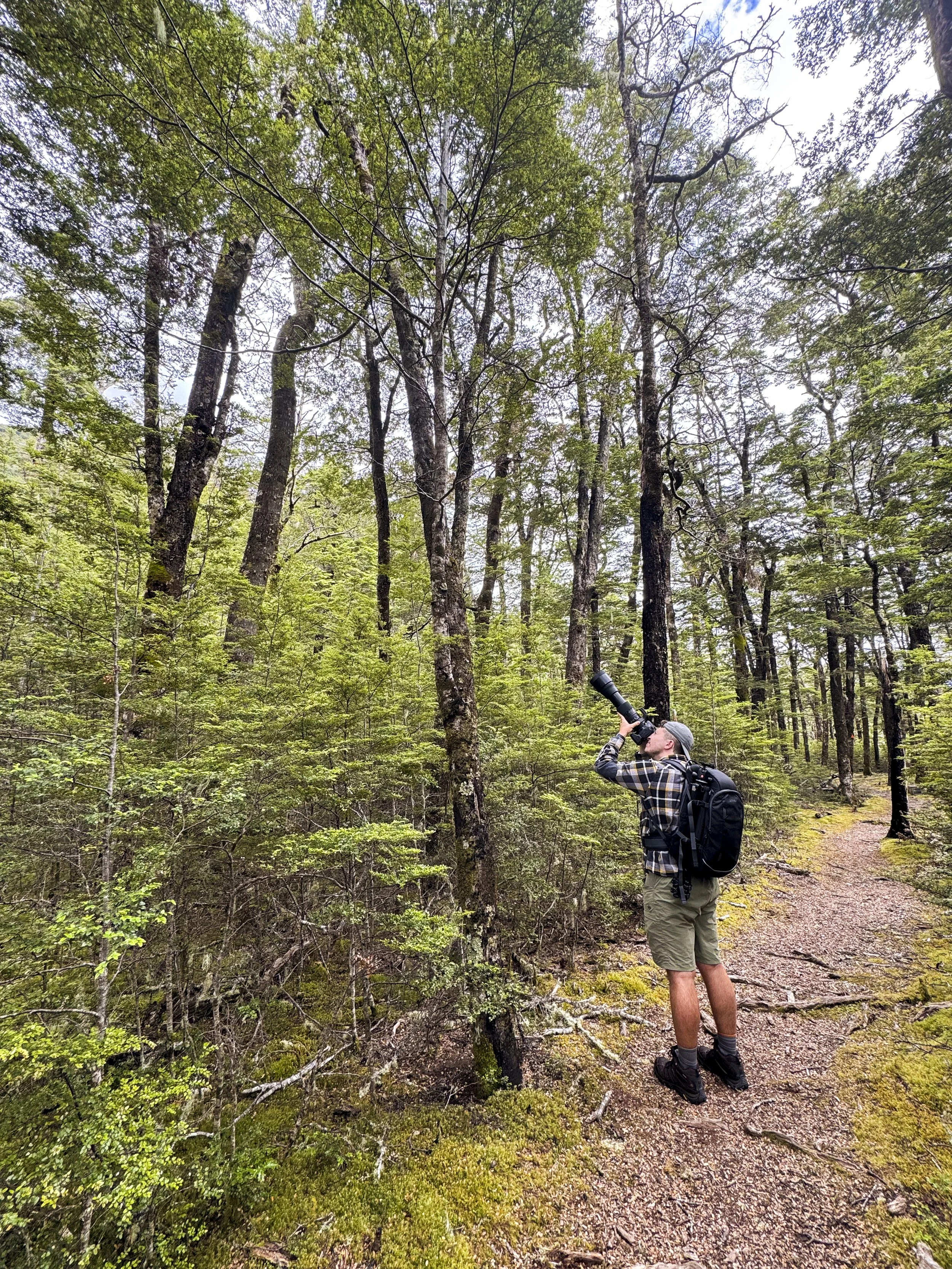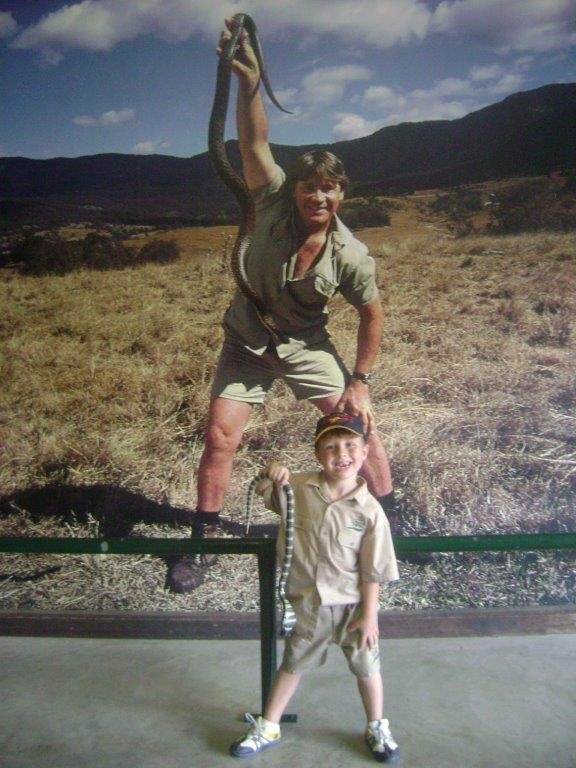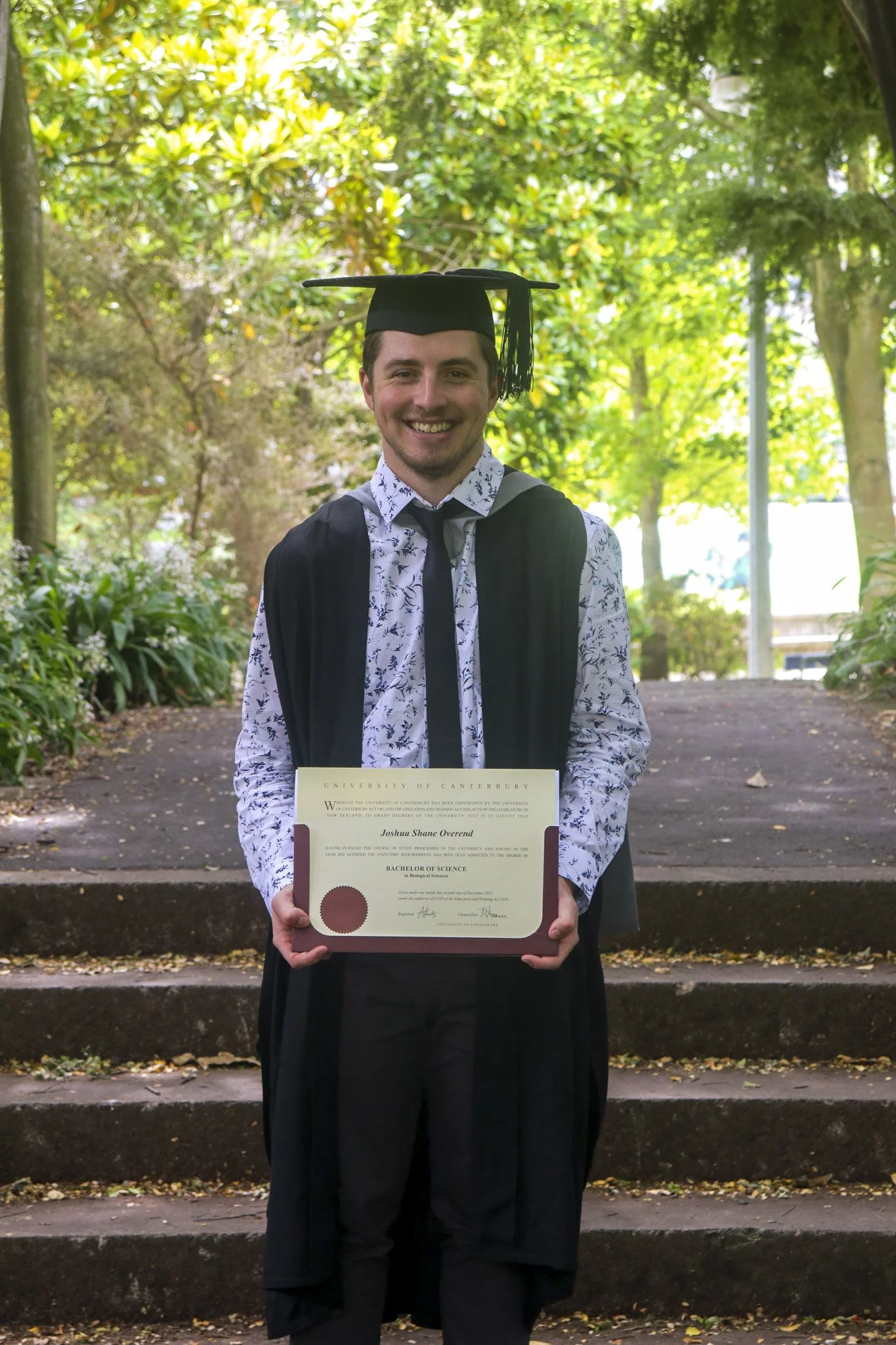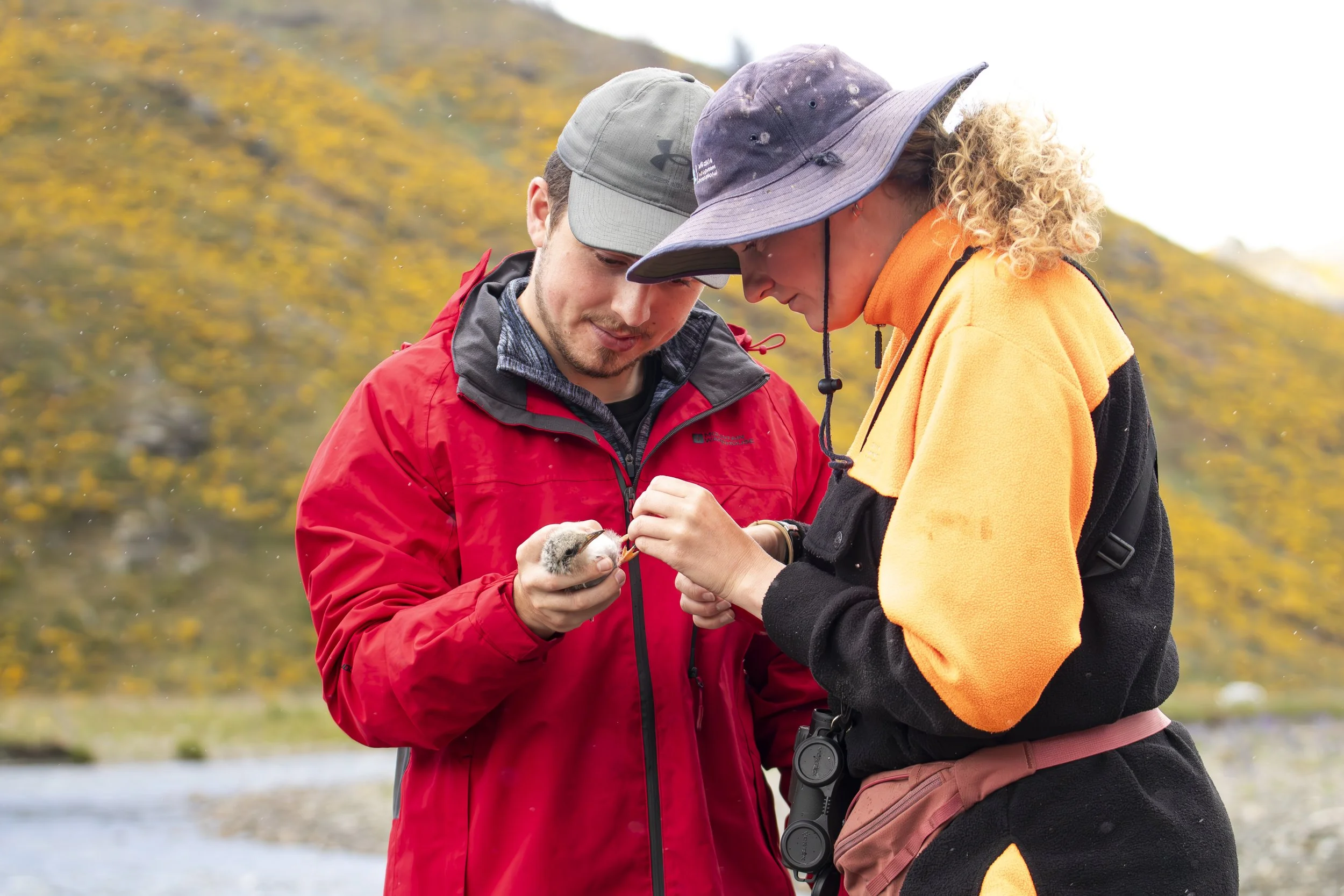My Journey So Far
If you are reading this blog, you likely already know my name and a little bit about me. As this is my first blog post I wanted to share my journey to date to further introduce myself, as well as convey how others can get into either wildlife conservation, photography, or both!
Photographing miromiro (tomtit) in Arthur’s Pass National Park.
For as long as I can remember, animals have been my passion. I can’t remember a time when I didn’t want to grow up and be a zookeeper or a biologist and be able to work with wildlife in the field. My whole room was covered in posters of animals from all around the world. While others collected superhero figurines or Pokémon cards, I collected insects, plants and even toy animals that I would place around the backyard as my own African Savannah. At the centre of this passion since I was two or three years old, is my hero- Steve Irwin.
Trying to be my hero on my first trip to Australia Zoo.
One of my earliest memories is going to Australia Zoo, dressed as Steve Irwin, and wanting to meet my idol. Unfortunately, I never got to meet him, but his enthusiasm for the animal kingdom was instilled in me from a very young age. I used to play in the backyard with toy snakes, pretending I was catching the real thing like Steve, or constantly pestering my parents to go to Orana Wildlife Park to take part in the lion experience.
Catching the deadly toy snake like Steve used to do.
I never grew out of this passion and continued this through my schooling life. Biology and any subjects relating to wildlife or the natural world, dominated my subjects at school. This led me to achieving my Bachelor’s degree, majoring in biology, from the University of Canterbury and starting my career working in conservation.
One of my proudest achievements- graduation day with my bachelors degree in biological sciences.
My wildlife photography journey began in 2019 at Taronga Zoo in Sydney, and has now become one of my biggest passions. My sister had recently brought a Canon 1500d which I stole for the day and started taking photos of every single animal at the facility. I loved photography from that moment and even convinced my family to change our holiday plans and go back to Taronga Zoo for a second time, so I could get more photos that I hadn’t managed to shoot the previous time.
I have had the privilege of visiting numerous wildlife hotspots around New Zealand. Some of the places I would recommend the most would be Tiritiri Matangi Island, Arthur’s Pass National Park, Dunedin, and the Abel Tasman Region. However, my favorite spot would be Kaikōura. This region supports a wealth of life due to the nutrient rich upwelling produced by the Kaikōura Canyon. Here, you can spot fur seals, many seabird species, dolphins, and whales! My number one spot that I am yet to visit would be Rakiura (Stewart Island to see kiwi in the Wild!
While I am only at the start of my photography and biological career, I am super proud that some of my images have been featured by Canon NZ, Kaikoura Whale Watch, Wellington Zoo, Akaroa Dolphins, and used in freshwater ecology lectures for the University of Canterbury. I aspire to have my images used to promote conservation messages all around the world for a magnitude of animals, and maybe one day be featured in the Wildlife Photographer of the Year competition. But more than any of this, I want to be able to travel the world and directly contribute to conservation, working alongside and monitoring some of the world’s most endangered and hard-to-find animals.
Volunteering at the South Island Wildlife Hospital allows me to get up close and personal with some of our incredible wildlife. This non-profit organization does incredible work rehabilitating numerous animals from blackbirds to hawks to penguins. Some of the species I have had the pleasure of working with include Tawaki (Fiordland crested penguin), Antipodean albatross, kea, takahe and even a Haast Tokoeka kiwi chick! It is a privilege to be able to help rehabilitate these animals for release back into the wild, and I hope to use these valuable skills throughout my career.
Kākāriki karaka (orange-fronted parakeet) found deep in the Hawdon Valley of Arthur’s Pass National Park
Wildlife photography can be extremely challenging, requiring enormous amounts of patience to wait for the animal to come into frame or perform the behaviour you are after, the results are incredibly rewarding. In combining my passion for wildlife photography and biology, I plan to marry these together and form a career in this field. The African savannah, Amazon Rainforest and jungles of Borneo are just some of the many places I want to visit to photograph the extraordinary wildlife. Not only this, but I intend to apply my degree and help conserve and protect some of the world’s most endangered species.
Staying closer to home, Aotearoa has a wealth of wildlife that I would love to experience. While I have recently found some of the world’s rarest species including kākāriki karaka (orange-fronted parakeet) and kakī (black stilt); kokako, pīwauwau (rock wren), kākāpō and mohua (yellowhead) remain on my bucket list. Above all this, the one animal I want to photograph the most in Aotearoa, is the orca. I have been so close to sighting killer whales, with sightings recorded in Kaikōura or Akaroa, just days around the time I was in these locations. However, I am still yet to lay eyes on them. Their intelligence is what interests me the most. How they have unique cultures and languages, and change the way they hunt based on their locations and available prey sources. Orcas are one of the most adaptable species in the ocean and still elude me to this day.
Banding tarapiroe (black-fronted tern) on the Clarence River.
Now I know that I am only at the start of my journey, but I wanted to offer some tips and advice that could inspire someone else to start their journey or develop their photography skills further. So, here are some things that I have learnt during my short stint at photographing wildlife.
1) Do some research.
Before you head out in search of wildlife, research your subject. Find out what time of year they will be easiest to find, investigate when they will be more alert and harder to find due to breeding or moulting seasons. Look into what time of day they will be most active or feeding and learn about their behaviour and life histories. When will there be offspring around? When will they be migrating inland or to warmer climates? Doing just a little bit of research can show you what environment to be searching for, and where in the habitat your target species might be.
2) Respect wildlife.
This is perhaps the most important rule of wildlife photography. You don’t want to interfere with an animal’s natural rhythm and alter its behaviour. Be quiet, keep your distance, and let the animal come to you. This also comes into the research part of wildlife photography, but know the legal limits of how close you can get to wildlife. This prevents you from getting hurt, but also prevents the animal from being disturbed or worse. Be as respectful as possible, and who knows, the wildlife may come to you.
3) Be patient and spend time in nature.
Wildlife photography can require a lot of patience. You could be sitting in a hide for hours or hiking for days to get to a location where you might see the animal you are targeting. But when the moment comes, it is all worth it. Give yourself enough time to be in the right environment and let the wildlife come to you. The more time you spend out in nature, the higher the chance of you having an unforgettable encounter.
4) Trial and error
Play with the manual settings on your camera. Adjust the ISO, change the shutter speed and play with different apertures to create your own style. This helps you to learn how to use the functions of your camera and portray a story in a brand-new way. Play with different compositions like the rule of thirds, off-centering and leading lines. All the best photographers come home with hundreds if not thousands of photos and only one or two that they are happy with. So, try as many styles as you can, and you’ll learn along the way.
5) Edit your photos.
Editing your images can make a huge difference in the result of your work. Even just slightly altering the lighting or reducing the noise can make your photo go from good to great. This can be a hard skill to get right, and I am most certainly no master at it. But the more you try, the more you will learn and produce higher-quality images.
A young kekeno (NZ fur seal) on the Kaikōura coastline. Please note that this seal approached me as I was photographing it from 20 metres away.
That brings me to the end of my first blog post. Thank you for reading along and for the ongoing support! I hope you may have learnt something more about me, be inspired to get out there and enjoy nature, or maybe pick up a camera and start creating your wildlife photography journey.






